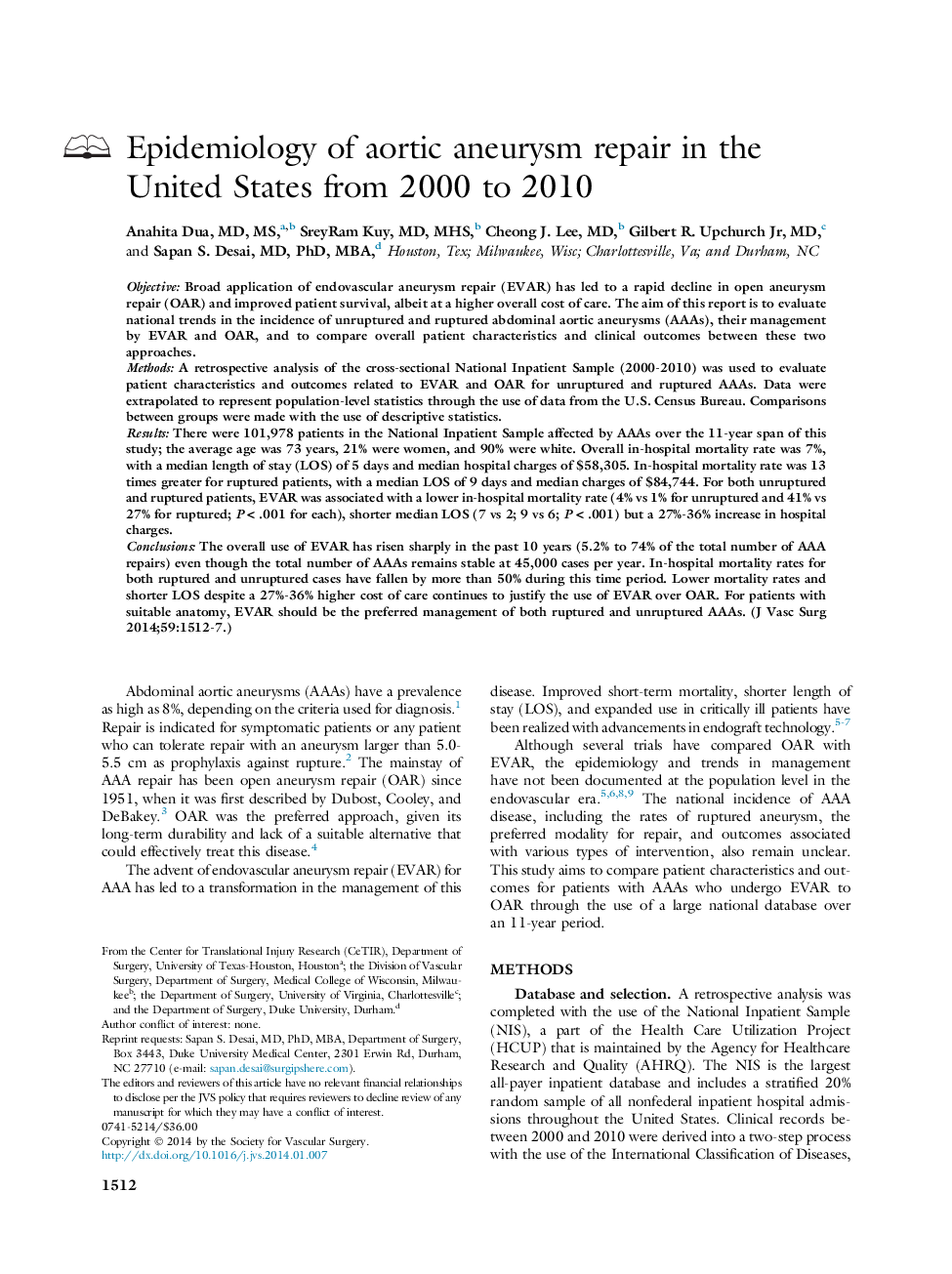| کد مقاله | کد نشریه | سال انتشار | مقاله انگلیسی | نسخه تمام متن |
|---|---|---|---|---|
| 5995451 | 1179843 | 2014 | 6 صفحه PDF | دانلود رایگان |
ObjectiveBroad application of endovascular aneurysm repair (EVAR) has led to a rapid decline in open aneurysm repair (OAR) and improved patient survival, albeit at a higher overall cost of care. The aim of this report is to evaluate national trends in the incidence of unruptured and ruptured abdominal aortic aneurysms (AAAs), their management by EVAR and OAR, and to compare overall patient characteristics and clinical outcomes between these two approaches.MethodsA retrospective analysis of the cross-sectional National Inpatient Sample (2000-2010) was used to evaluate patient characteristics and outcomes related to EVAR and OAR for unruptured and ruptured AAAs. Data were extrapolated to represent population-level statistics through the use of data from the U.S. Census Bureau. Comparisons between groups were made with the use of descriptive statistics.ResultsThere were 101,978 patients in the National Inpatient Sample affected by AAAs over the 11-year span of this study; the average age was 73Â years, 21% were women, and 90% were white. Overall in-hospital mortality rate was 7%, with a median length of stay (LOS) of 5Â days and median hospital charges of $58,305. In-hospital mortality rate was 13 times greater for ruptured patients, with a median LOS of 9Â days and median charges of $84,744. For both unruptured and ruptured patients, EVAR was associated with a lower in-hospital mortality rate (4% vs 1% for unruptured and 41% vs 27% for ruptured; PÂ < .001 for each), shorter median LOS (7 vs 2; 9 vs 6; PÂ < .001) but a 27%-36% increase in hospital charges.ConclusionsThe overall use of EVAR has risen sharply in the past 10Â years (5.2% to 74% of the total number of AAA repairs) even though the total number of AAAs remains stable at 45,000 cases per year. In-hospital mortality rates for both ruptured and unruptured cases have fallen by more than 50% during this time period. Lower mortality rates and shorter LOS despite a 27%-36% higher cost of care continues to justify the use of EVAR over OAR. For patients with suitable anatomy, EVAR should be the preferred management of both ruptured and unruptured AAAs.
Journal: Journal of Vascular Surgery - Volume 59, Issue 6, June 2014, Pages 1512-1517
